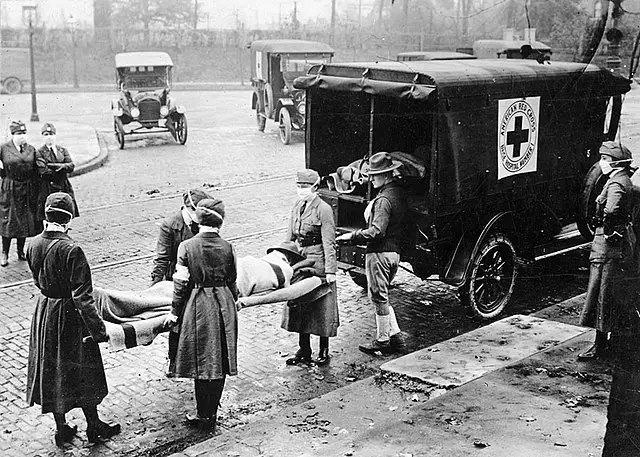Reading Comprehension: The Spanish Flu – Causes and Origin

Develop your reading skills. Read the following text about the Spanish flu and do the comprehension task.
The Spanish Flu: A Historical Perspective
The Spanish flu, also known as the 1918 flu pandemic, stands as one of the deadliest pandemics in recent history, spreading worldwide from 1918 to 1919 and infecting approximately 500 million people – about one-third of the world’s population at that time. The death toll ranged from 50 to 100 million globally, making it the severest pandemic in human history.
Caused by an H1N1 virus with genes of avian origin, the outbreak of the Spanish flu may have been facilitated by the conditions of World War I. Factors such as lack of hygiene, malnourishment, overcrowded medical facilities, and poor sanitation exacerbated the spread of the virus and promoted bacterial superinfection.
Regarding its origin, there is no consensus among historians and epidemiologists. The flu was first observed in Europe, the United States, and parts of Asia before quickly spreading worldwide. Misleadingly dubbed the “Spanish flu” due to neutral Spain’s uncensored reporting of the pandemic’s effects, the true geographic origin remains uncertain.
Decades later, the World Health Organization (WHO) urged caution in naming new human infectious diseases to avoid negative impacts on nations and people. The Spanish flu has since been referred to as the “1918 influenza pandemic” or variations thereof.
Despite both being highly contagious respiratory infections with similar symptoms, there are significant differences between the Spanish flu and the coronavirus. While both diseases affect the respiratory system, they belong to different virus families and target different demographic groups. The Spanish flu was particularly lethal for young adults, whereas the coronavirus poses greater risks for the elderly and those with pre-existing conditions.
Unlike the challenges faced during the Spanish flu pandemic, modern scientific advancements have enabled the rapid detection of the coronavirus and the development of vaccines. Additionally, measures to mitigate the spread of the Spanish flu, such as isolation and social distancing, were inconsistently applied, whereas the coronavirus pandemic has prompted widespread adoption of such measures across the globe.
Source: Wikipedia
Related Pages:


